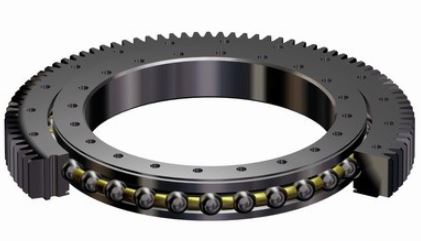
行业知识
Home>Industry knowledge>Content
I believe that many people are interested in how to install the slewing bearing. Let’s learn about it.Slewing bearingWhat are the keys to the device?
First of all, before the slewing bearing, the device of the host must be checked. The support should meet the strength requirements, and the connecting surface needs to be machined to ensure that the surface is flat and free of debris and burrs. If the machine cannot be machined to this flatness, a strong special plastic can be injected as a filler to ensure the accuracy of the device plane. The ring of the slewing bearing has a quenched soft zone, which has an S mark on the end face of the ring. It is necessary to position the soft zone in the non-load zone or the very constant load zone during installation (the plug hole is always located at the soft zone ).
When the equipment slewing support, first perform radial positioning, intersperse and tighten the device bolts, and check the reversal of the bearing. In order to ensure the smooth transmission of the bearing, the gears should be meshed and checked before the device bolts are not tightened. There should be a sufficient pre-tightening force when tightening the bolt, and the pre-tightening force should be 70% of the yield limit of the bolt data. The device bolts should be equipped with quenched and tempered flat washers. Spring washers are strictly prohibited.
If the installation of the slewing bearing is completed and put into work, after 100 hours of continuous operation, the pre-tightening torque of the bolts of the device shall be fully checked whether it meets the requirements, and then the above inspection shall be repeated every 500 hours of continuous operation.
At the end of the slewing bearing device, an appropriate amount of smooth grease should be filled, and the bearing should be reversed while filling to make the smooth grease evenly distributed. After the slewing bearing has been working for a period of time, a part of the smooth grease will be lost, so the slewing bearing in normal operation will be supplemented with lubricating grease every 50-100 hours.
Before packaging the slewing bearing, the inner and outer raceways need to be coated with anti-rust and smooth dual-purpose grease, then wrapped with plastic film, composite kraft paper, and then wrapped with industrial wrapping tape for inner packaging.
During transportation, the bearing should be placed horizontally on the vehicle, and measures should be taken to avoid sliding and vibration, and auxiliary support should be added when necessary.
Bearings should be placed horizontally on a dry, ventilated and flat site, and should be separated from chemicals and other corrosive items during storage.
